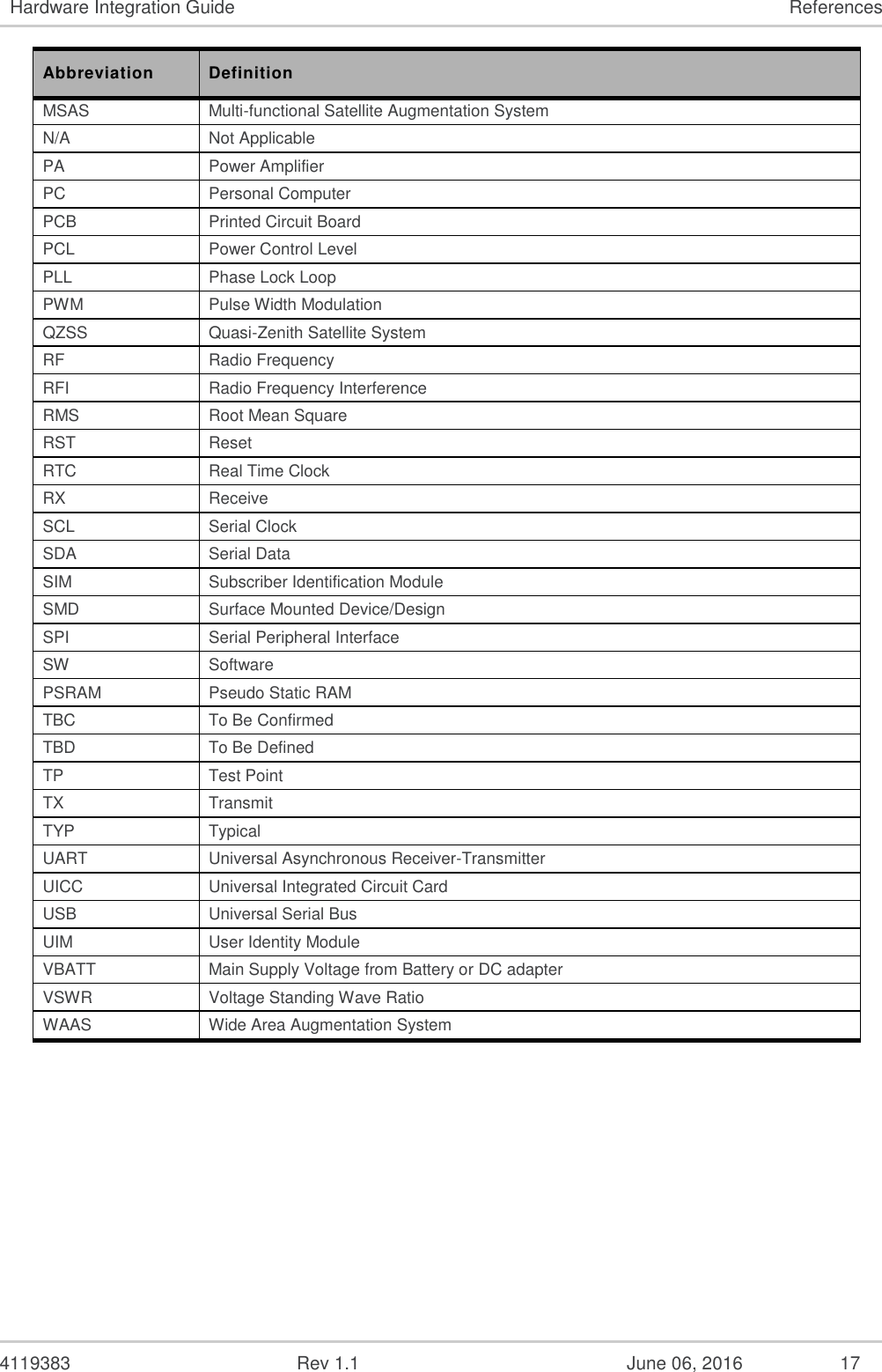Sierra Wireless HL7588 Wireless Module User Manual Hardware Integration Guide
Sierra Wireless Inc. Wireless Module Hardware Integration Guide
Contents
- 1. Users Manual
- 2. HL7588 Accessory Board - Hardware Integration Guide - Rev1.1
- 3. Instruction Manual
HL7588 Accessory Board - Hardware Integration Guide - Rev1.1
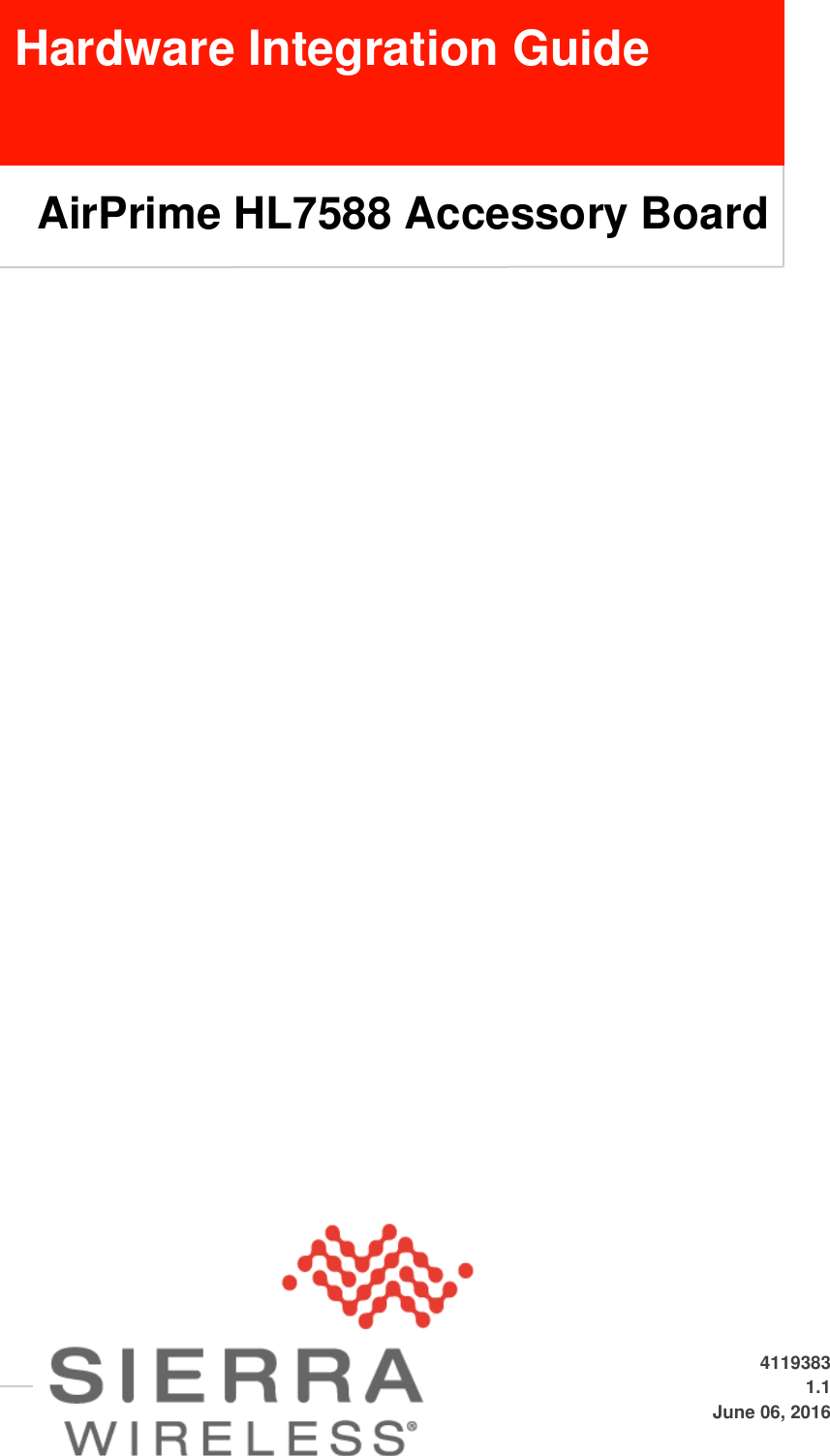
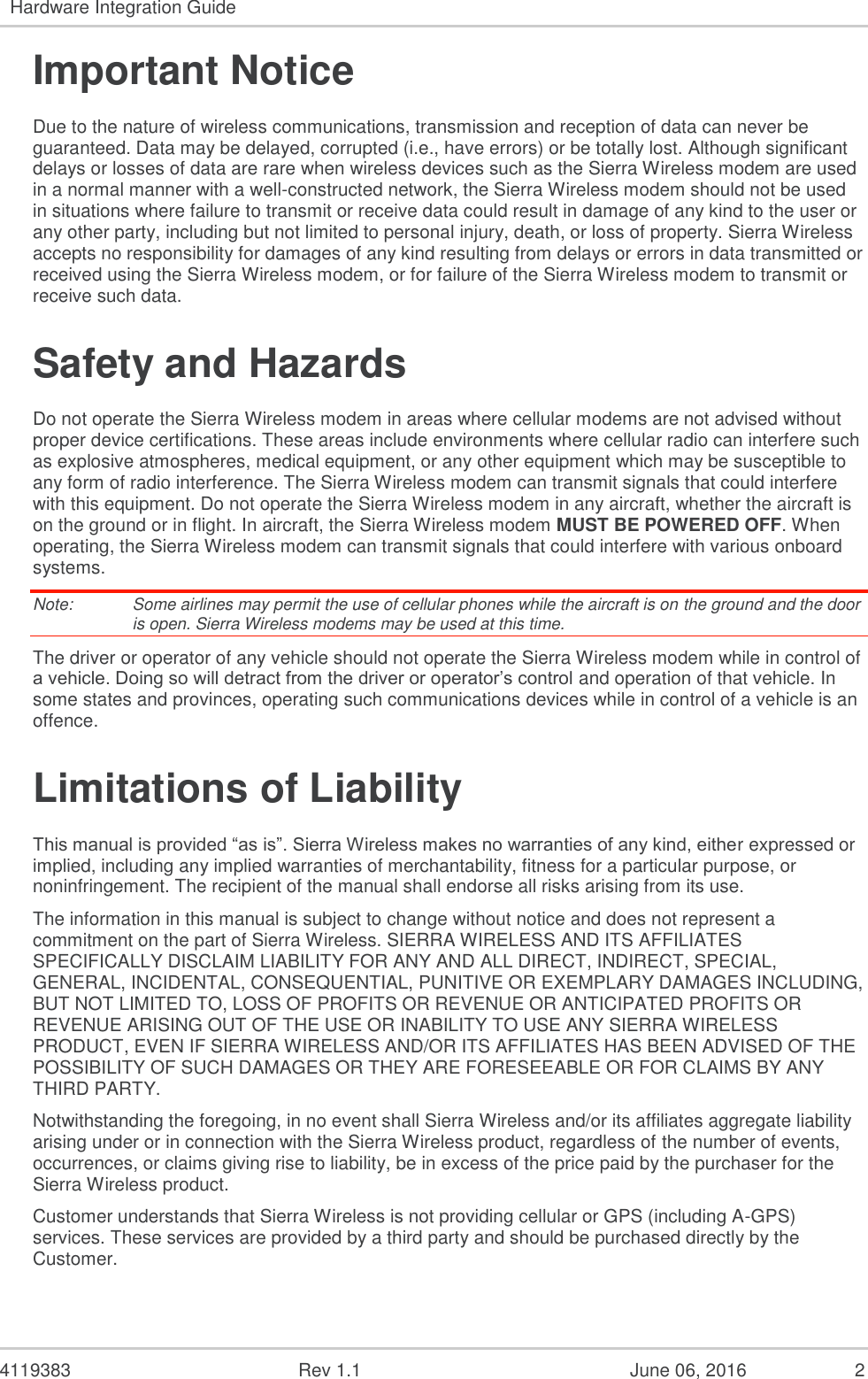
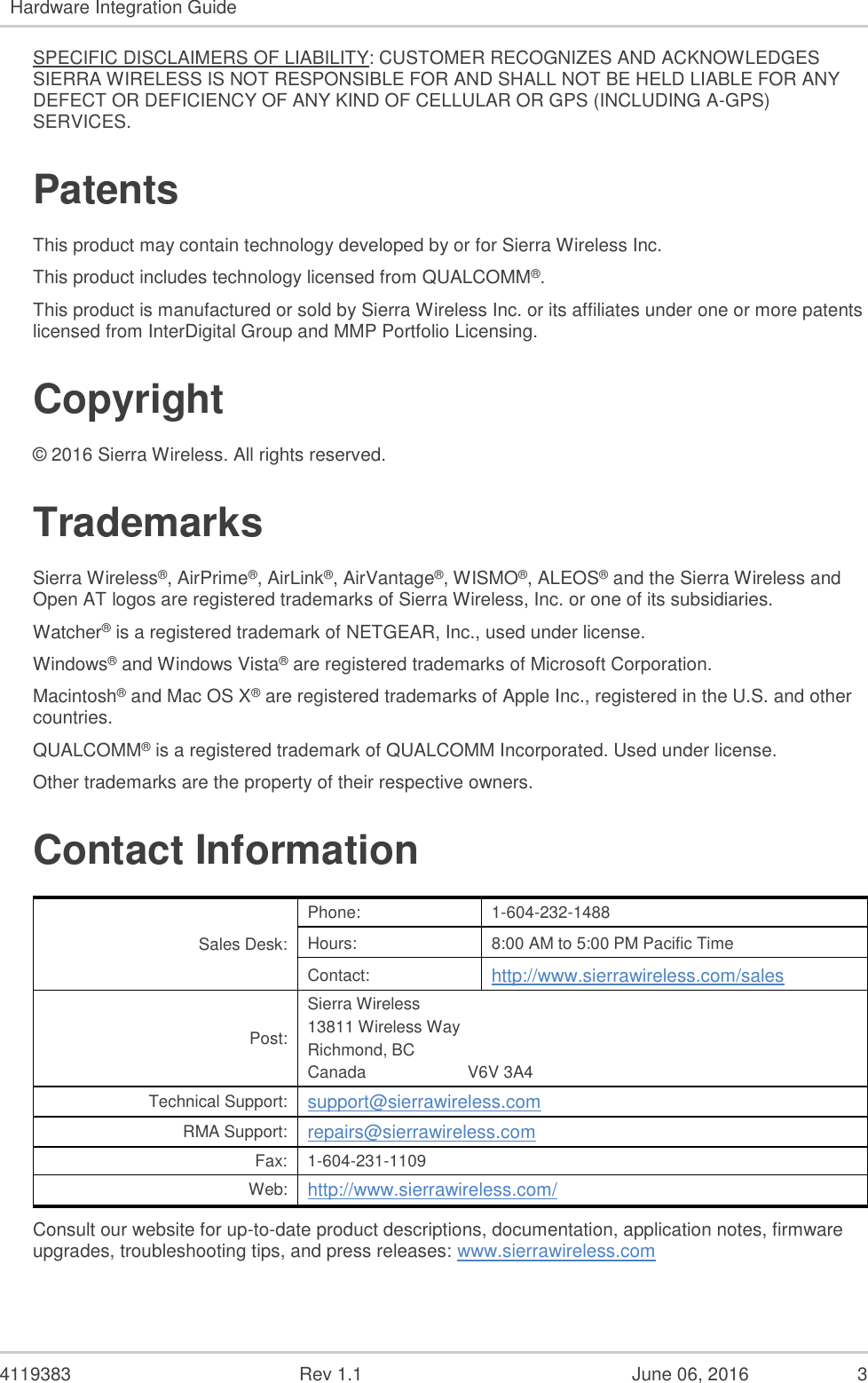
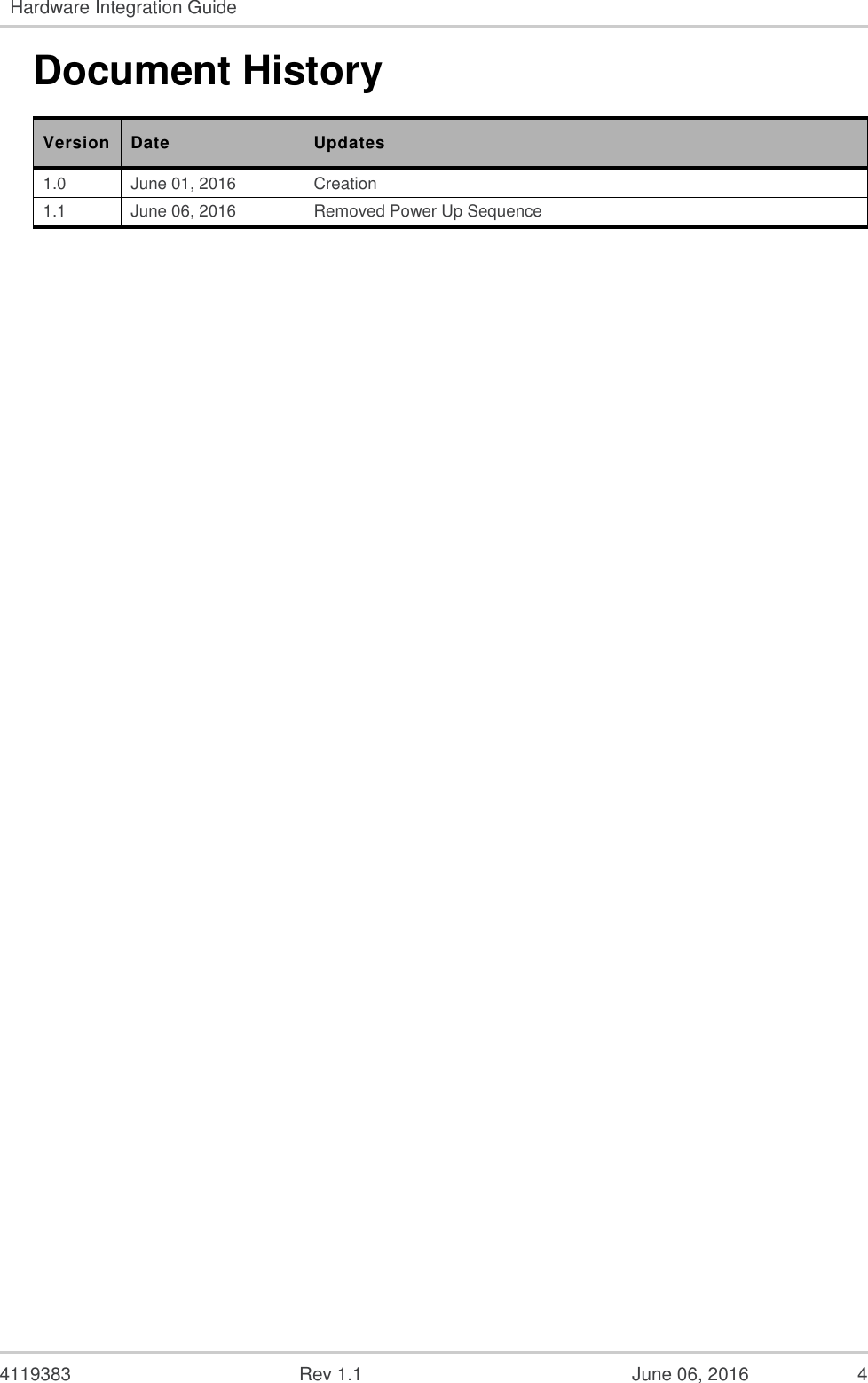
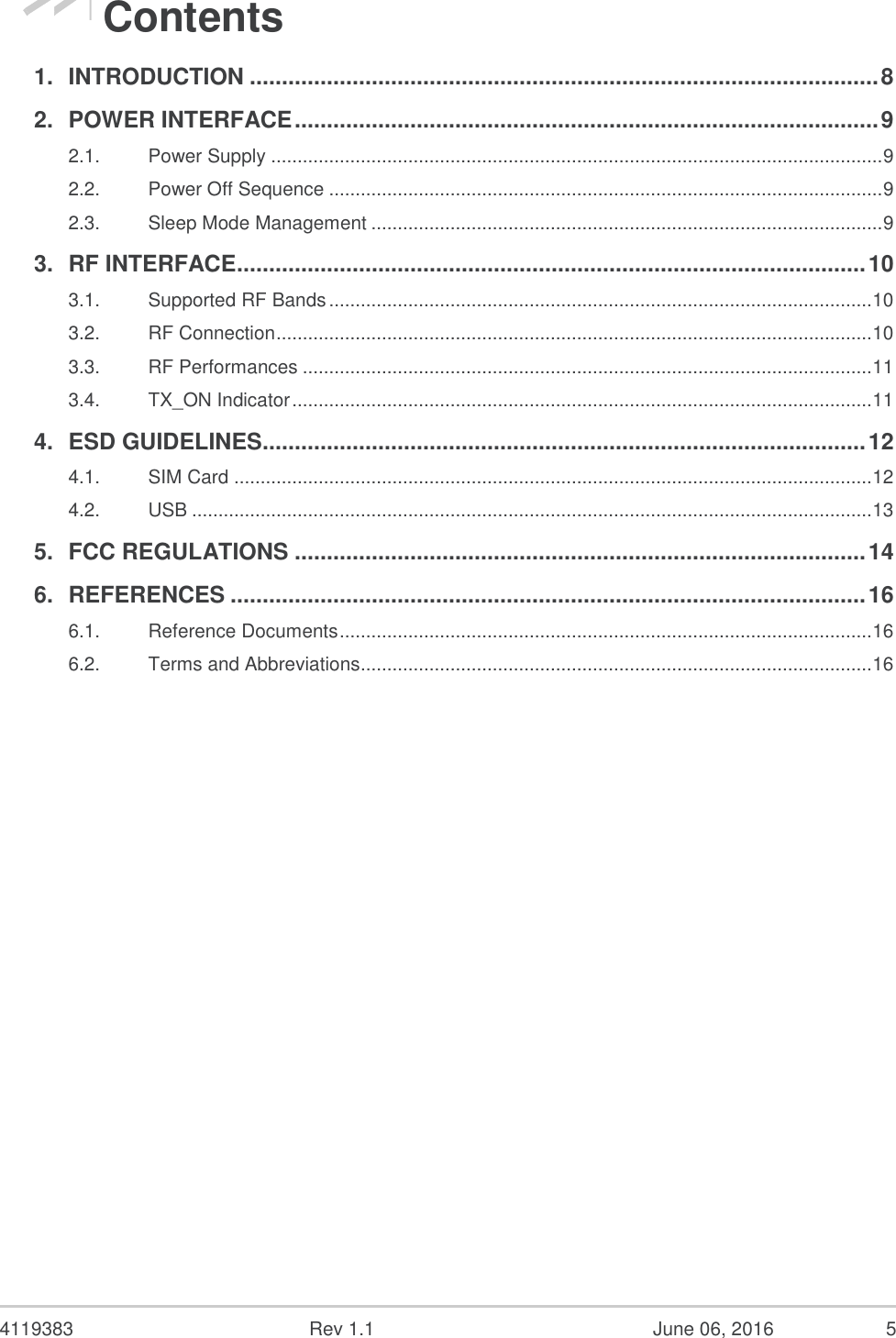
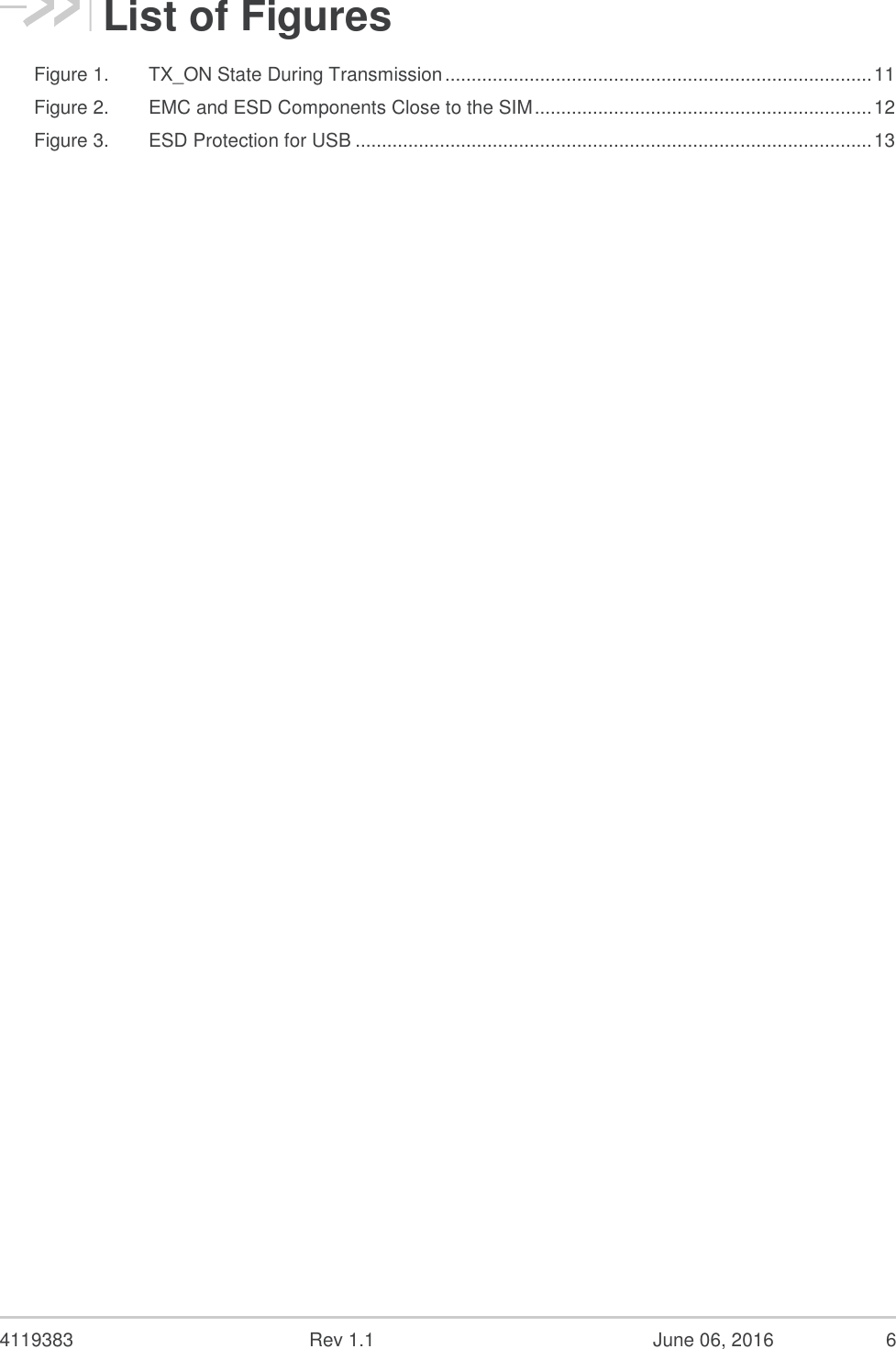
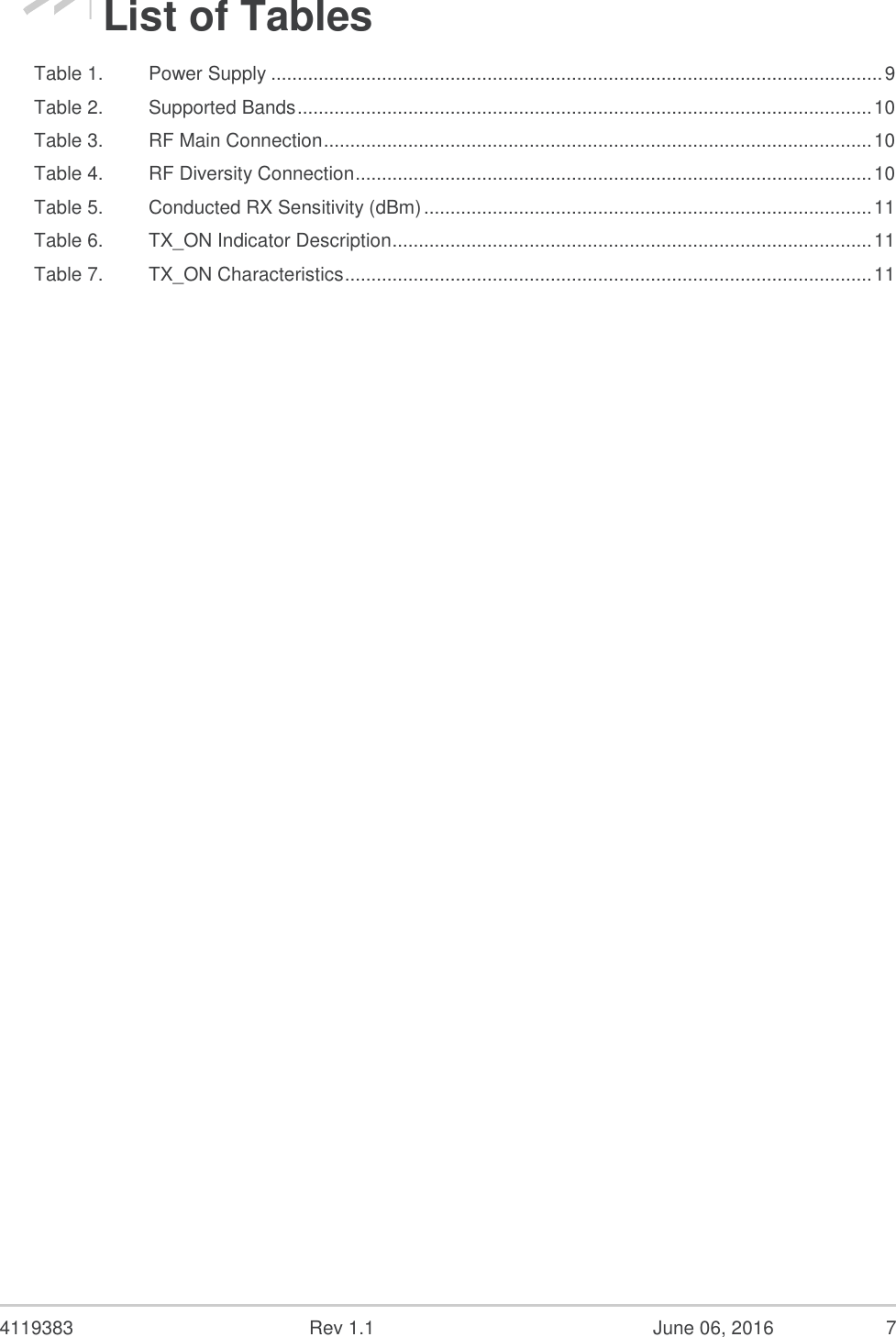
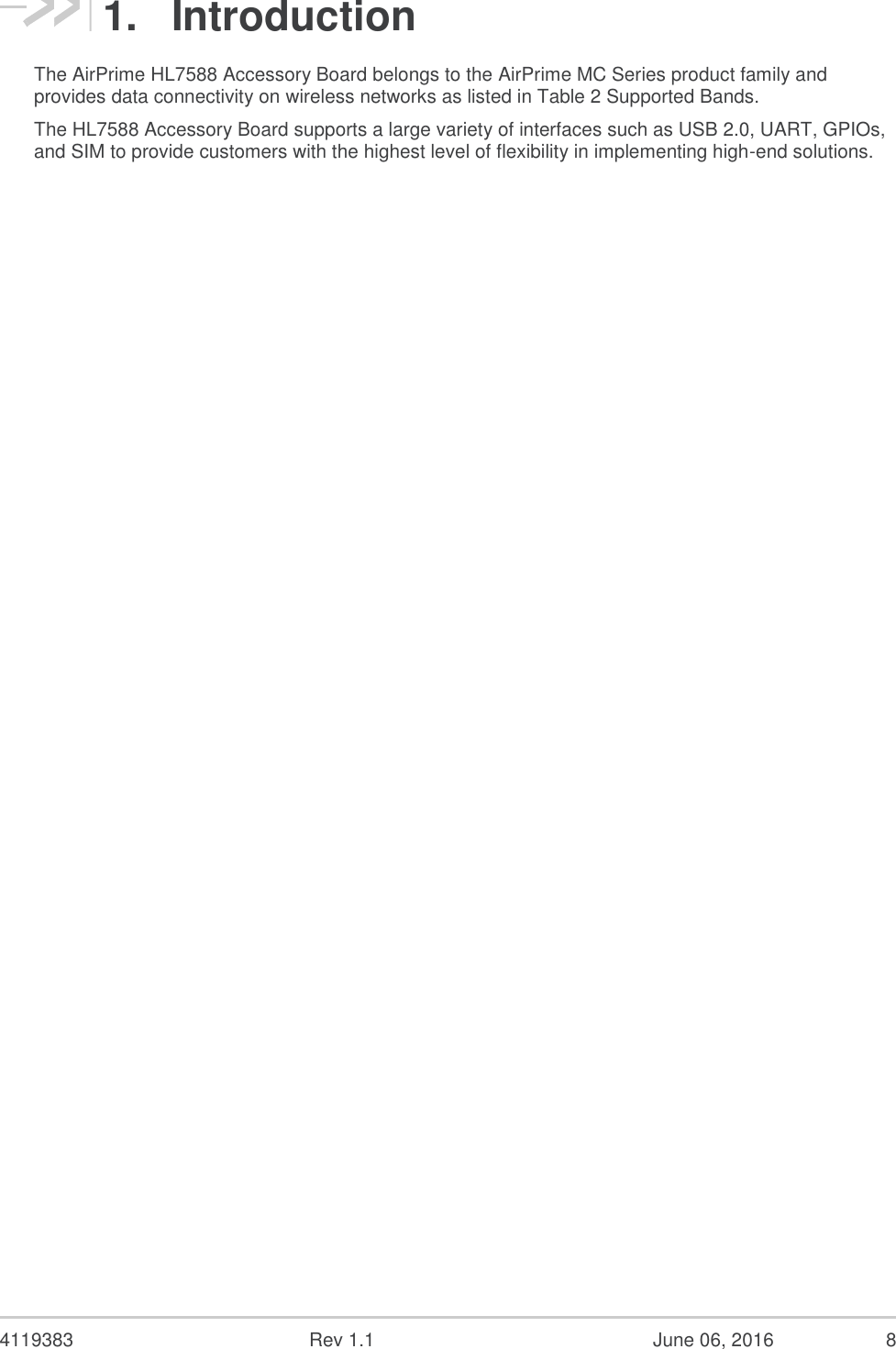
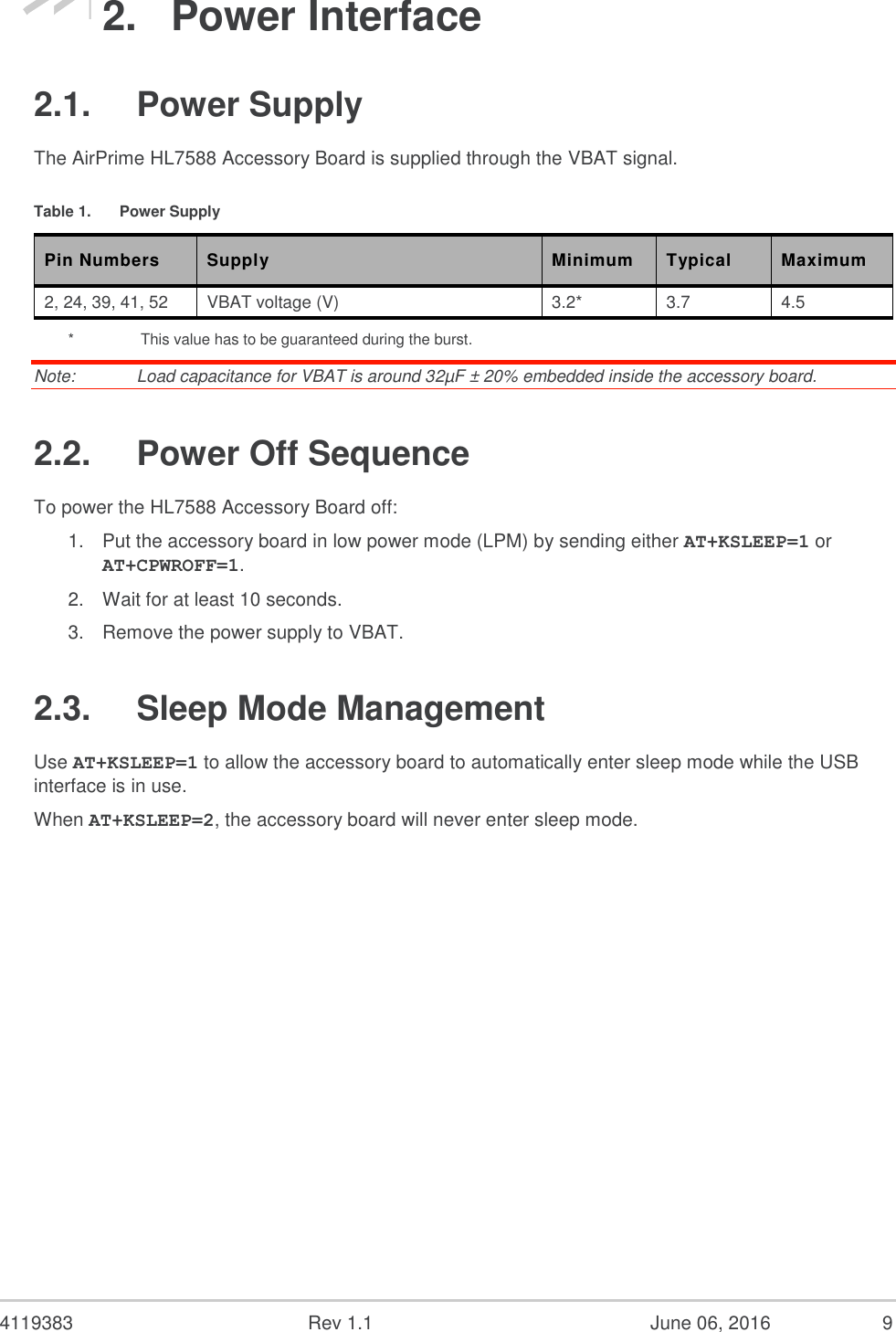
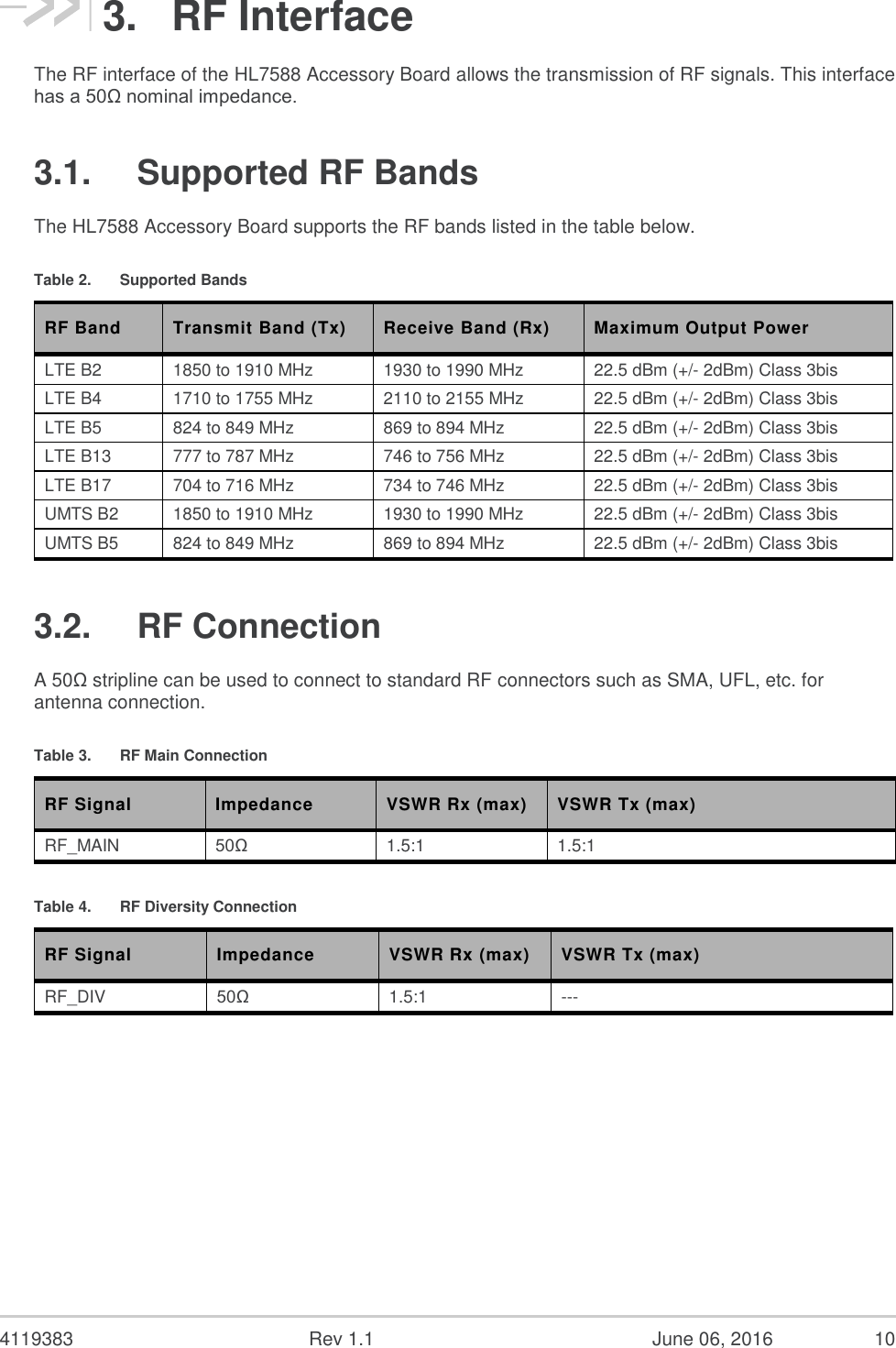
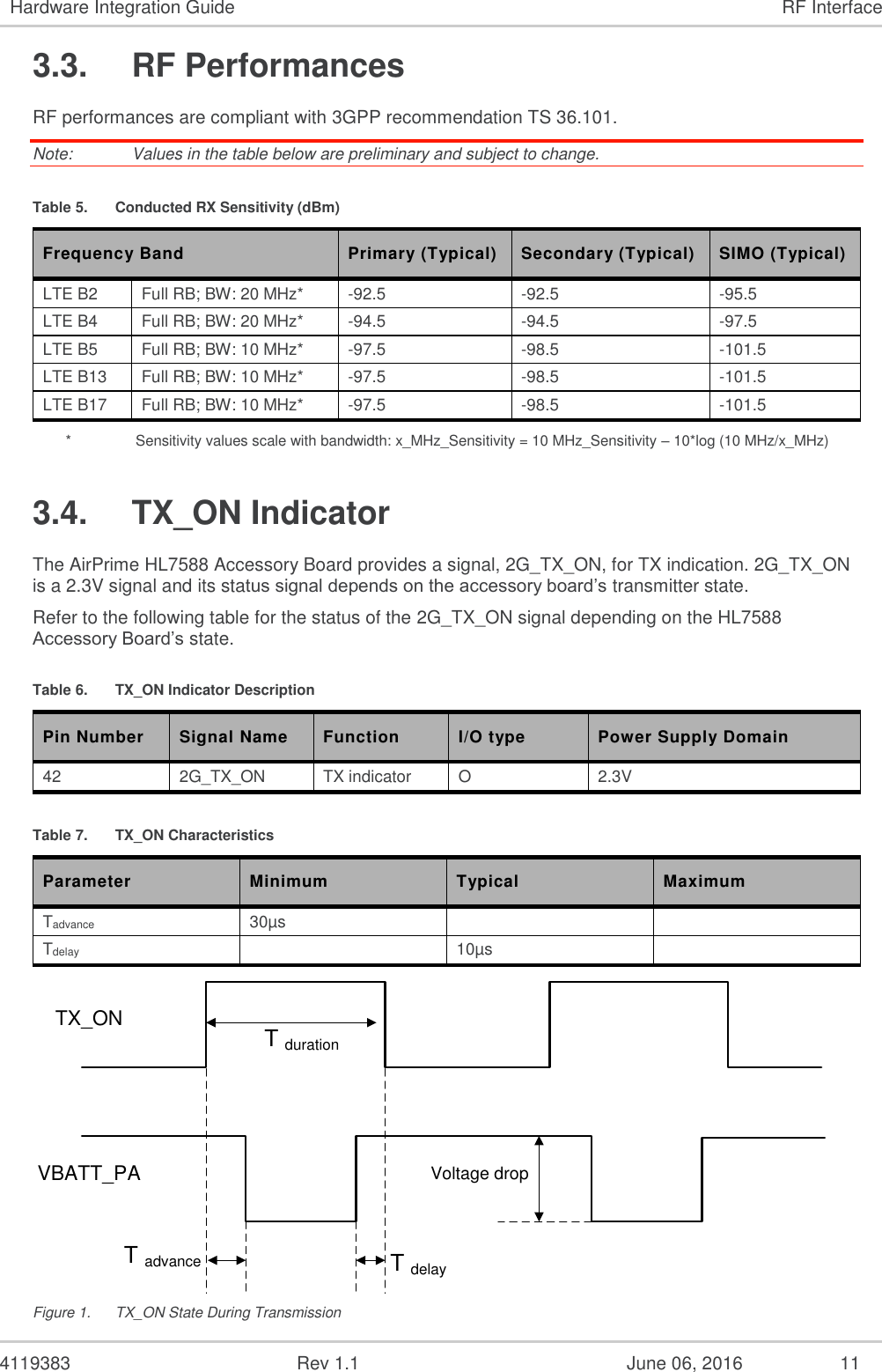
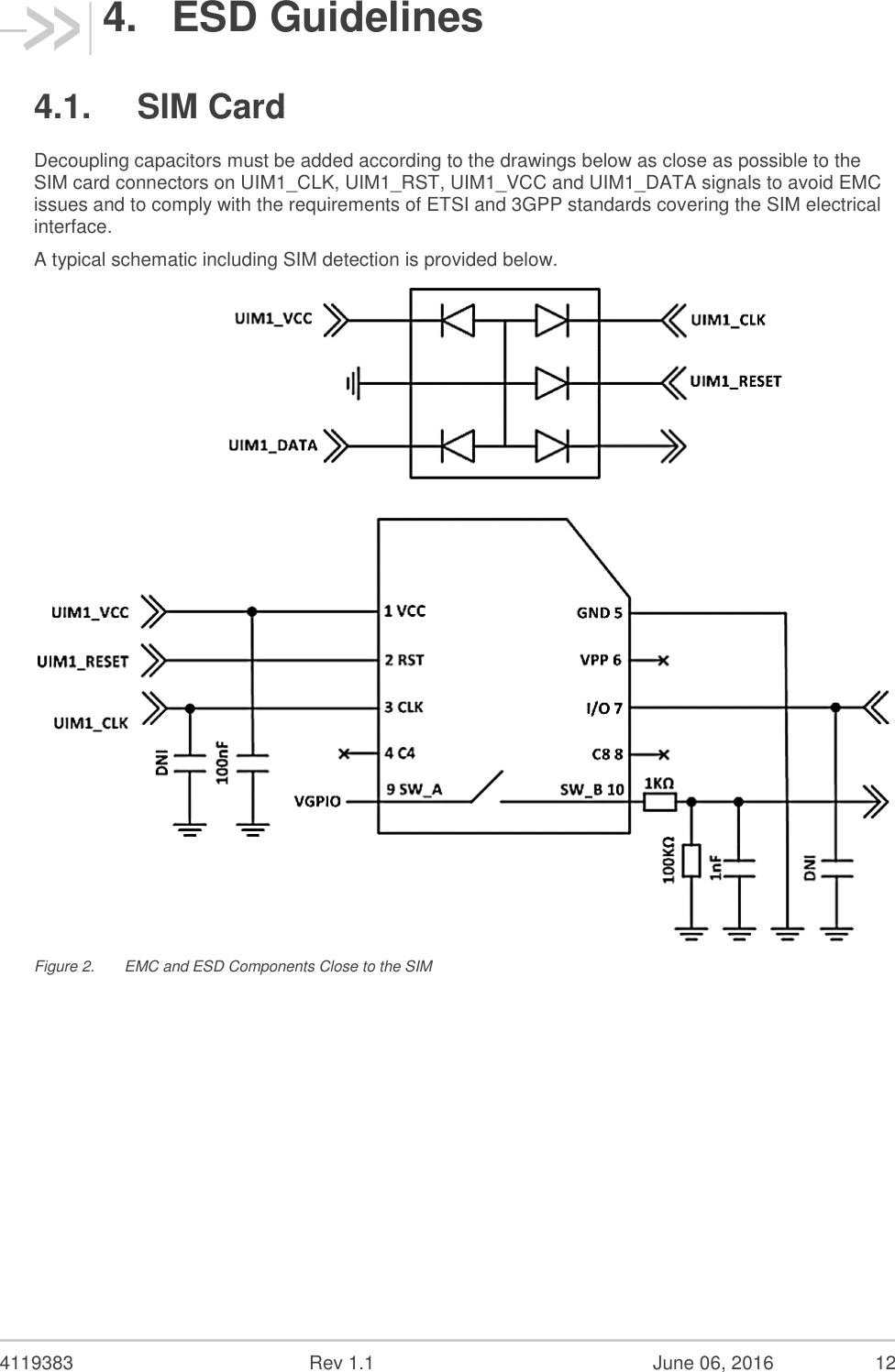
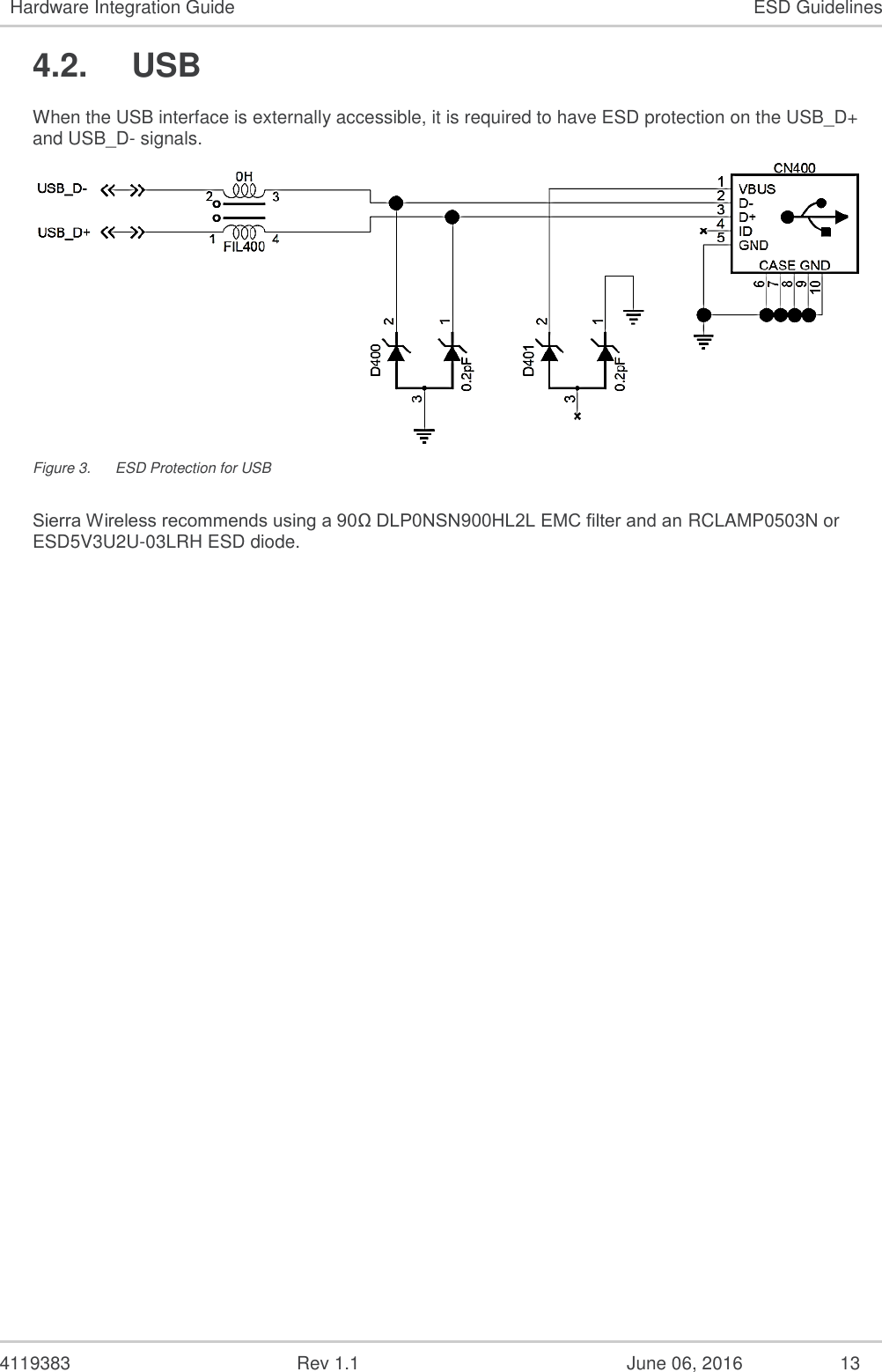
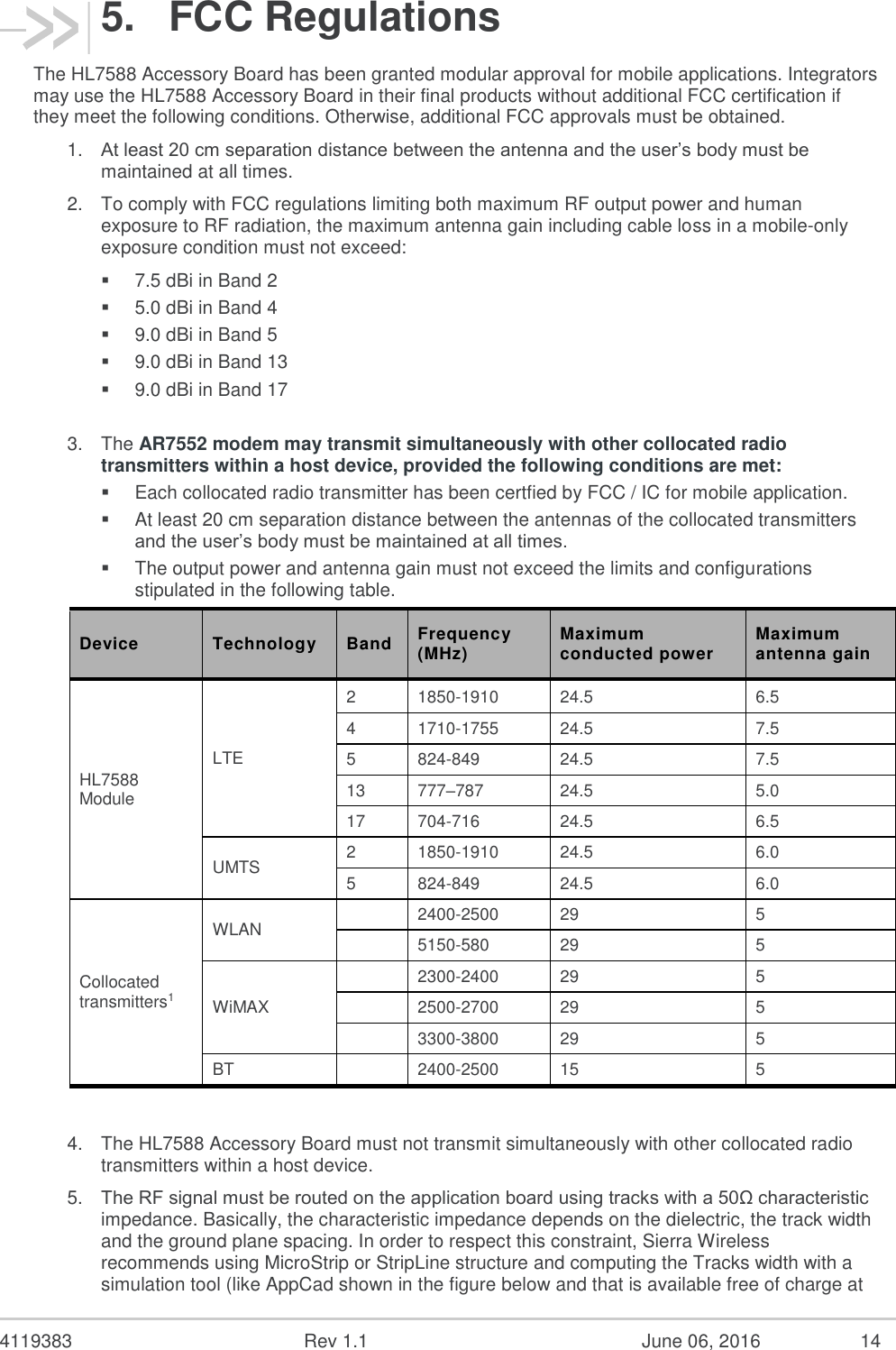
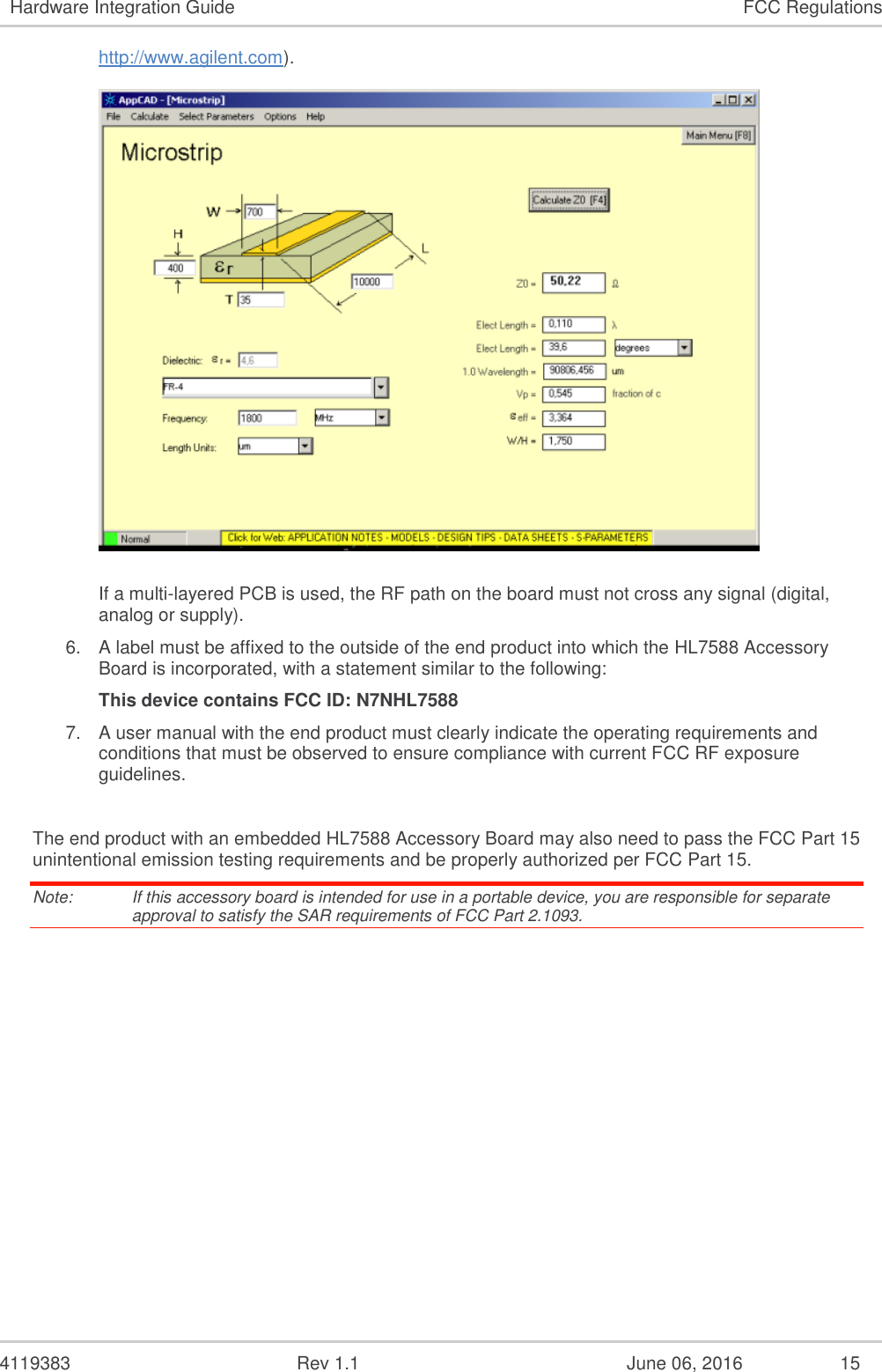
![4119383 Rev 1.1 June 06, 2016 16 6. References 6.1. Reference Documents [1] AirPrime HL7588 Accessory Board Product Technical Specification Reference number: 4119052 6.2. Terms and Abbreviations Abbreviation Definition ADC Analog to Digital Converter AGC Automatic Gain Control AT Attention (prefix for modem commands) CDMA Code Division Multiple Access CF3 Common Flexible Form Factor CLK Clock CODEC Coder Decoder CPU Central Processing Unit DAC Digital to Analog Converter DTR Data Terminal Ready EGNOS European Geostationary Navigation Overlay Service EMC Electromagnetic Compatibility EMI Electromagnetic Interference EN Enable ESD Electrostatic Discharges ETSI European Telecommunications Standards Institute FDMA Frequency-division multiple access GAGAN GPS aided geo augmented navigation GLONASS Global Navigation Satellite System GND Ground GNSS Global Navigation Satellite System GPIO General Purpose Input Output GPRS General Packet Radio Service GSM Global System for Mobile communications Hi Z High impedance (Z) IC Integrated Circuit IMEI International Mobile Equipment Identification I/O Input / Output LED Light Emitting Diode LNA Low Noise Amplifier MAX Maximum MIN Minimum](https://usermanual.wiki/Sierra-Wireless/HL7588.HL7588-Accessory-Board-Hardware-Integration-Guide-Rev1-1/User-Guide-3055645-Page-16.png)
